Thank you to preparednesspro for this well written article that I had to share. Next time you see that Tillamook cheese on SUPER sale, dont hesitate to stock up with the following information!
Can you name at least 10 different kinds of cheese that you love?
Do you believe that cheese should be its own food group?
Are you helpless to abide by your diet unless it involves huge amounts of melted cheese?
Then this article is for you!
 So picture this. It’s a bona fide emergency survival situation. You are holed up on your home and living off of the emergency preparedness supplies you stored. And you’ve got one heck of a hankering for some yummy melted cheese. But you’re just not in the mood for the Velveeta, that nasty powdered stuff, or the “squirt” kind of cheese. You want a good solid bite of a yummy Parmesan, or Swiss, or a sharp cheddar. (I’m making myself drool even as I write this.) But hey, cheese doesn’t store for a very long time, right? Well, in this case, I’m happy to tell you that you’re wrong. And if you’re a true cheese addict, then you’ll be happy to hear that you’re wrong for once, right?
So picture this. It’s a bona fide emergency survival situation. You are holed up on your home and living off of the emergency preparedness supplies you stored. And you’ve got one heck of a hankering for some yummy melted cheese. But you’re just not in the mood for the Velveeta, that nasty powdered stuff, or the “squirt” kind of cheese. You want a good solid bite of a yummy Parmesan, or Swiss, or a sharp cheddar. (I’m making myself drool even as I write this.) But hey, cheese doesn’t store for a very long time, right? Well, in this case, I’m happy to tell you that you’re wrong. And if you’re a true cheese addict, then you’ll be happy to hear that you’re wrong for once, right?
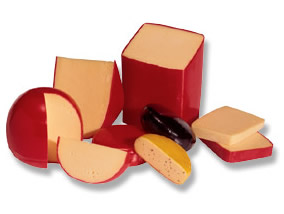 So here’s the good news. You CAN have your favorite cheese on hand, even in an emergency, and even though no stores are open and you have no access to electricity. All you have to do is buy the hard blocks of cheese that you want now in order to have them stored for up to the next 25 years. Cheese wax prevents your cheese from developing mold or bacteria and it keeps the moisture in. Simply use a combination of dipping and brushing with a natural boar’s hair brush to apply the melted cheese wax liberally to your block of cheese, let it harden, and then, VOILA – you’ve got your wish. Cheese treated with cheese wax will store for up to 25 years at a mild to cool temperature. Sure, it will continue to age. But it sure won’t get moldy! (And even if it does in parts, you can simply cut off that part, and re-wax over it.) Be sure that you select block sizes of cheese that you and your family can easily consume within a 3 to 5 day period in order to avoid it going bad once you’ve cut into it.
So here’s the good news. You CAN have your favorite cheese on hand, even in an emergency, and even though no stores are open and you have no access to electricity. All you have to do is buy the hard blocks of cheese that you want now in order to have them stored for up to the next 25 years. Cheese wax prevents your cheese from developing mold or bacteria and it keeps the moisture in. Simply use a combination of dipping and brushing with a natural boar’s hair brush to apply the melted cheese wax liberally to your block of cheese, let it harden, and then, VOILA – you’ve got your wish. Cheese treated with cheese wax will store for up to 25 years at a mild to cool temperature. Sure, it will continue to age. But it sure won’t get moldy! (And even if it does in parts, you can simply cut off that part, and re-wax over it.) Be sure that you select block sizes of cheese that you and your family can easily consume within a 3 to 5 day period in order to avoid it going bad once you’ve cut into it.

A couple of tips you should know though.
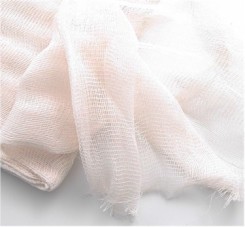 Don’t use paraffin wax. It tends to crack. Cheese wax warms slower and heats to a higher temperature and thus plies better to your cheese shapes and sizes. Cheese wax is also less crumbly and you can use less of it than paraffin. Remember, it’s reusable too!
Don’t use paraffin wax. It tends to crack. Cheese wax warms slower and heats to a higher temperature and thus plies better to your cheese shapes and sizes. Cheese wax is also less crumbly and you can use less of it than paraffin. Remember, it’s reusable too! - I have yet to find a hard cheese that I can’t wax. So long as it’s hard enough to be in a solid block, you can wax it.
- You don’t need cheesecloth, but if you desire to use it prior to your wax layers, it may be helpful getting the wax off. I haven’t had any problems without it though.
- It’s best to melt the cheese wax in a double boiler as opposed to direct heat. Any pan you use to melt your cheesewax in will be your designated cheese wax pan. They are impossible to get clean afterwards. So be forewarned.
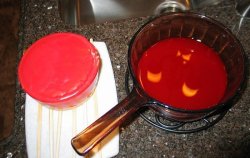 The less you handle the cheese with your hands the better. Use food handling gloves.
The less you handle the cheese with your hands the better. Use food handling gloves. - Dip the cheese in for about 5 seconds, then bring it out and HOLD it there for about 90 seconds. Do 3 layers of dipping and then one layer of brushing. (Using the natural boar’s hair brush) The reason why you want to use this kind of brush specifically is because other brushes will apply the cheese wax too thick, or with crevices, etc. This kind of brush is perfect for cheese waxing.
- You don’t need to use food-grade labels for your cheese, however, it’s smart to use a label on the outside of your cheese just prior to the last wax layer. That way you don’t have to worry about it falling off. Be sure to label not only the kind of cheese it is, but when it was waxed as well.
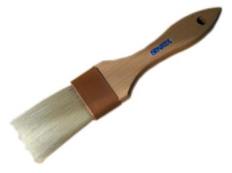 Don’t store your waxed cheese in additional containers. Just stack them on top of like cheeses and let them breathe. I like to hang them from the ceiling in a “fishing net” kind of contraption.
Don’t store your waxed cheese in additional containers. Just stack them on top of like cheeses and let them breathe. I like to hang them from the ceiling in a “fishing net” kind of contraption. - Be sure to check for pockets or crevices that didn’t get sealed. Four total thin layers of wax is a good practice. There’s no need to do more coats than that.
- The cheese surface should be clean and dry prior to waxing.
- If your 2nd and 3rd coats are applied while the prior coat is still just a bit warm you will get a better adhesion.
- Cheese wax can be re-used several times. You can simply wash it in warm water, let it dry and then re-melt it. So when you remove cheese wax from your cheeses, you can simply reheat and reapply the wax. Simply heat the cheese wax to about 200 degrees F. This will also ensure that you’re not transferring any bacteria or unnecessary moisture to your new cheese–even when you’re putting it on your cheese which is cooler.
- You do not need to filter the cheese wax after you melt it. So don’t worry about that step.
- Your first coat will have some unevenness to it. Don’t worry. The 2nd and 3rd coat will even it out just fine.
- Cheese will respond to gravity. So using cheesewax vs. paraffin is important as it’s more pliable. I periodically turn my cheese in view of the gravitational pull.
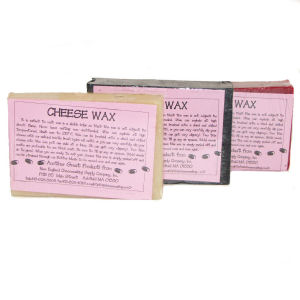 Cheese wax can be found multiple places online or in your local health food stores. I also recommend that you use red or black cheesewax as it will prevent more light from getting int. You should also have no problem finding a boar bristle brush either.
Cheese wax can be found multiple places online or in your local health food stores. I also recommend that you use red or black cheesewax as it will prevent more light from getting int. You should also have no problem finding a boar bristle brush either.
Once you get the hang of this cheese waxing stuff you can progress to making your own cheese from powdered milk in any flavor you decide! Yummy!
Enjoy the recipe below!

 So picture this. It’s a bona fide emergency survival situation. You are holed up on your home and living off of the emergency preparedness supplies you stored. And you’ve got one heck of a hankering for some yummy melted cheese. But you’re just not in the mood for the Velveeta, that nasty powdered stuff, or the “squirt” kind of cheese. You want a good solid bite of a yummy Parmesan, or Swiss, or a sharp cheddar. (I’m making myself drool even as I write this.) But hey, cheese doesn’t store for a very long time, right? Well, in this case, I’m happy to tell you that you’re wrong. And if you’re a true cheese addict, then you’ll be happy to hear that you’re wrong for once, right?
So picture this. It’s a bona fide emergency survival situation. You are holed up on your home and living off of the emergency preparedness supplies you stored. And you’ve got one heck of a hankering for some yummy melted cheese. But you’re just not in the mood for the Velveeta, that nasty powdered stuff, or the “squirt” kind of cheese. You want a good solid bite of a yummy Parmesan, or Swiss, or a sharp cheddar. (I’m making myself drool even as I write this.) But hey, cheese doesn’t store for a very long time, right? Well, in this case, I’m happy to tell you that you’re wrong. And if you’re a true cheese addict, then you’ll be happy to hear that you’re wrong for once, right?  So here’s the good news. You CAN have your favorite cheese on hand, even in an emergency, and even though no stores are open and you have no access to electricity. All you have to do is buy the hard blocks of cheese that you want now in order to have them stored for up to the next 25 years. Cheese wax prevents your cheese from developing mold or bacteria and it keeps the moisture in. Simply use a combination of dipping and brushing with a natural boar’s hair brush to apply the melted cheese wax liberally to your block of cheese, let it harden, and then, VOILA – you’ve got your wish. Cheese treated with cheese wax will store for up to 25 years at a mild to cool temperature. Sure, it will continue to age. But it sure won’t get moldy! (And even if it does in parts, you can simply cut off that part, and re-wax over it.) Be sure that you select block sizes of cheese that you and your family can easily consume within a 3 to 5 day period in order to avoid it going bad once you’ve cut into it.
So here’s the good news. You CAN have your favorite cheese on hand, even in an emergency, and even though no stores are open and you have no access to electricity. All you have to do is buy the hard blocks of cheese that you want now in order to have them stored for up to the next 25 years. Cheese wax prevents your cheese from developing mold or bacteria and it keeps the moisture in. Simply use a combination of dipping and brushing with a natural boar’s hair brush to apply the melted cheese wax liberally to your block of cheese, let it harden, and then, VOILA – you’ve got your wish. Cheese treated with cheese wax will store for up to 25 years at a mild to cool temperature. Sure, it will continue to age. But it sure won’t get moldy! (And even if it does in parts, you can simply cut off that part, and re-wax over it.) Be sure that you select block sizes of cheese that you and your family can easily consume within a 3 to 5 day period in order to avoid it going bad once you’ve cut into it. 
 Don’t use paraffin wax. It tends to crack. Cheese wax warms slower and heats to a higher temperature and thus plies better to your cheese shapes and sizes. Cheese wax is also less crumbly and you can use less of it than paraffin. Remember, it’s reusable too!
Don’t use paraffin wax. It tends to crack. Cheese wax warms slower and heats to a higher temperature and thus plies better to your cheese shapes and sizes. Cheese wax is also less crumbly and you can use less of it than paraffin. Remember, it’s reusable too! 

 Cheese wax can be found multiple places online or in your local health food stores. I also recommend that you use red or black cheesewax as it will prevent more light from getting int. You should also have no problem finding a boar bristle brush either.
Cheese wax can be found multiple places online or in your local health food stores. I also recommend that you use red or black cheesewax as it will prevent more light from getting int. You should also have no problem finding a boar bristle brush either.